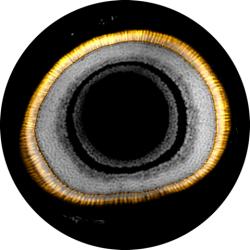
Research Interests
How does the brain produce social behaviors? While we are all familiar with these behaviors, their origins in neural circuits and in evolution remain mysterious. Social behaviors are important for navigating our communities, raising well-adjusted offspring, and maintaining our own wellbeing. Additionally, these behaviors are disrupted in conditions including autism, social anxiety disorder, and schizophrenia.
Identifying genes and neurons that regulate social behaviors.
In the Juntti Lab, we use a multidisciplinary approach that spans timescales and disciplines. We focus on behaviors that are conserved across vertebrate species including mating, aggression, and parenting. These behaviors are conserved in the fascinating family of cichlid fishes that we study (more below). Innate social behaviors rely on signaling pathways including testosterone, estrogen, and prostaglandins. We manipulate these pathways by pharmacologic and genetic means (CRISPR), and quantitatively measure the resulting behavioral changes. We also use candidate and unbiased approaches to identify other genes that impact social behaviors. These techniques highlight additional genes and neurons that we can subsequently manipulate with genome editing and other tools that work robustly in cichlids. Our work will provide an understanding of how neural circuits function to generate social behaviors.
A variety of social systems among cichlids.
There are over 2000 species of cichlids, found predominantly in the Rift Valley lakes of East Africa. These species are ideal model species because they have robust social behaviors and a tremendous variety of social systems, including monogamy and polygamy; parental care by females, males, or both; aggressive territoriality and relative gregariousness. They communicate via auditory, chemical, and visual means that differ across species. In fact, these cues are crucial for females as they choose a mate, and her selection of specific characteristics likely contributed to this explosive radiation of species. Several dozen cichlid species genomes have been sequenced, and falling sequencing costs enable additional genomes to be sequenced at will. Most work focuses on the cichlid Astatotilapia burtoni, a species from Lake Tanganyika with a sequenced genome that we study in the lab. We will also exploit the variety of cichlid species with social systems that are not found in any traditional laboratory model organism to gain insights into complex social behaviors.
Interested? Visit our Lab website.
Education
B.S., University of Wisconsin-Madison
Ph.D., University of California, San Francisco
Postdoctoral Training, Stanford University









